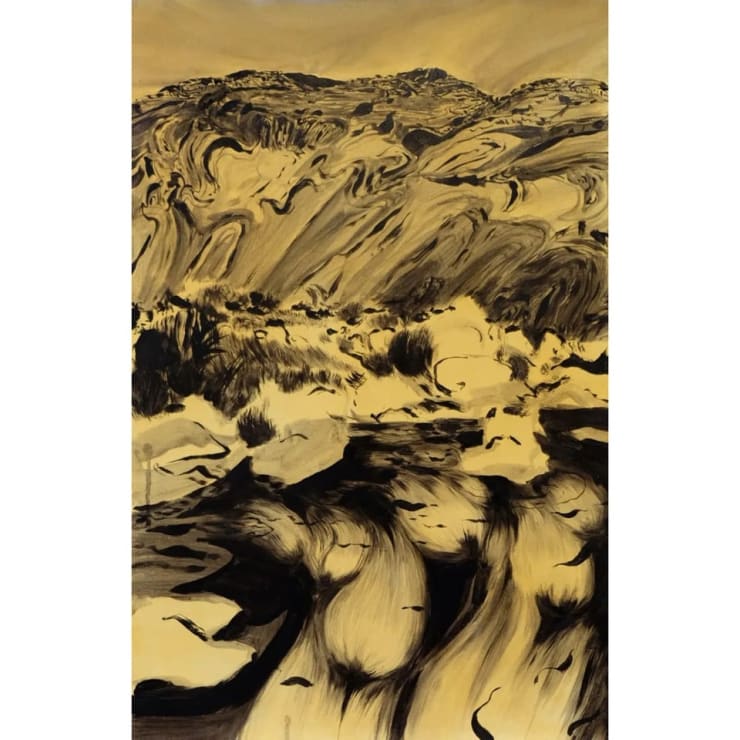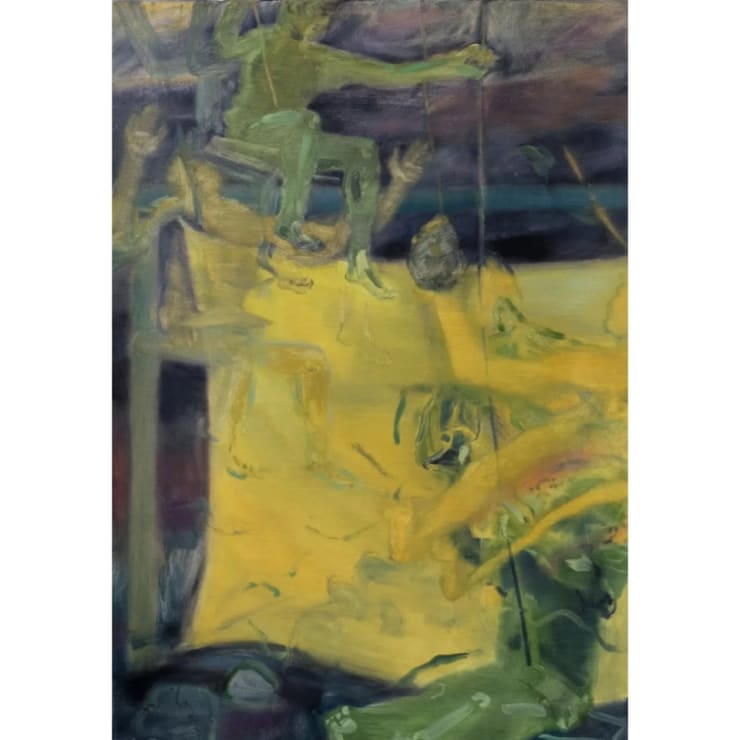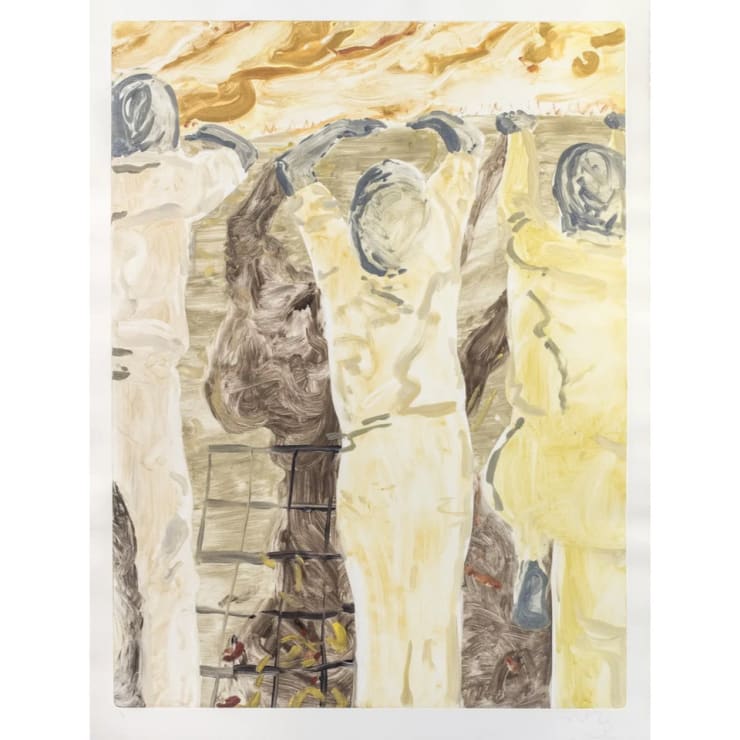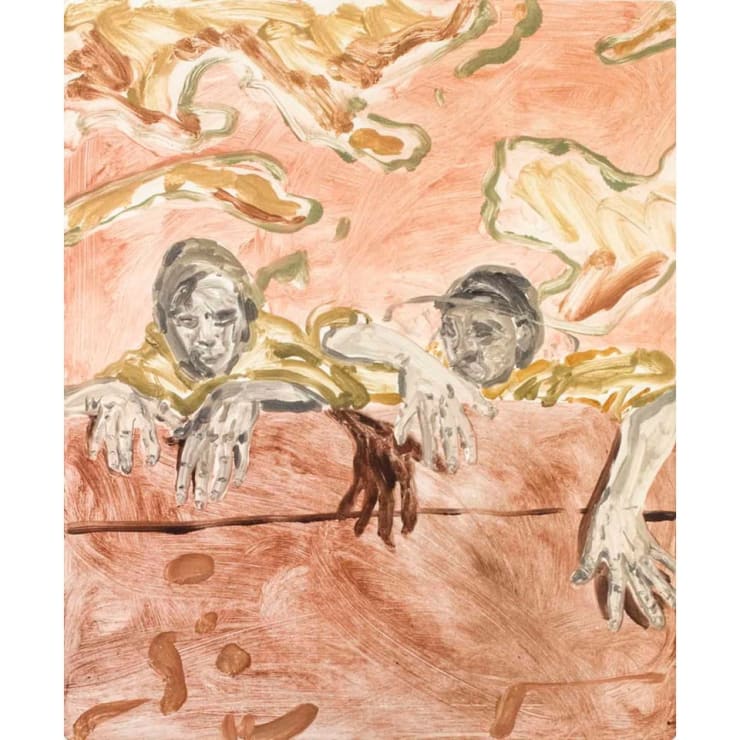We can learn so much from looking at art from other cultures so every month I interview artists worldwide as it strengthens our design practice. After recently discovering the work of Anna from Cape Town, I was engrossed in her bold and vibrant work. Looking at the painting that I recently bought from her this autumn takes me somewhere else completely which is much needed today!
Read on to find out what inspires and influences Anna to create her work. Anna grew up in diverse, lively Cape Town where she did a BFA at the Michaelis School of Fine Art. Her professional practice is far-reaching; she works primarily in painting, printmaking, sculpture and more. Her works are kept in private collections and institutions worldwide, among which the South African National Art Bank.
Alexandra Lunn: Tell us about your work.
Anna Van Der Ploeg: It’s all about relationships, the subtle actions they are shaped by, and the way interactions are perceived differently by each person or thing involved. Sometimes it’s about the relationship of an internal self to the external landscape; other times it is captivated by how our two internals are vastly different while experiencing the same external. Often it is an attempt to understand how power and inequality function, how they diffuse into seemingly insidious scenarios. Movement, and capturing a moment in a state of change, is one tool I use to explore this. As an intellectual framework and physical practice, I have found beekeeping to be a stimulating and sustaining well of ideas and parallels. I trained as a printmaker, but have recently been working mainly in oils, ink, and carved, painted woodblocks.
Alexandra Lunn: What’s South Africa like?
Anna Van Der Ploeg: There are a lot of talented people with fresh vision and energy in South Africa, and perspective hard-won through an active engagement with inequality. People are warm, sharply funny, and the country has shaped us by a history that is sometimes all too present. I think we take pleasure, and dance well.
Alexandra Lunn: What influences you and how has your practice evolved?
Anna Van Der Ploeg: Beekeeping, humour, power relations, poetry, contradictions, embodiment and physical interaction, symbolism and perceived synchronicities. My practice has become more urgent, larger, sharper. I suppose much of the motivation to do a masters degree is to dig into my practice in an academic environment, and evolve it in a considered and deliberate way.
Alexandra Lunn: How is Belgium life treating you?
Anna Van Der Ploeg: Right now I can probably tell you more about online seminars and the seagulls walking over my skylight than anything in particular to Belgium, per se. I do think it’s a useful thing to go through, being uprooted, to view your work and ideas against a new background, in a different context, and to be anonymous. Obviously I’m not getting as much out of that experience as one would normally hope for right now - it’s far from ideal - but neither is anyone else, out of pandemic-life, for that matter. I’m still in a very fortunate position, considering the circumstances. We’re getting something else, something much weirder and out of control.
My classes are filled with students from different disciplines - music, fashion, drama, social design - rather than only ‘fine arts’ students, making for very stimulating discussions. For example, the performance cellist and lute-maker had different perspectives on the questions of what public art means to their disciplines, than the sculptors. Despite zoom and distance, these conversations go on. I’m looking forward to being able to move around, go to museums, see all the art-related things going on, and meet other artists.
Alexandra Lunn: Tell us about Driehoek–Flat Tyre Under the Oaks
Anna Van Der Ploeg: Walking in the mountains is a great passion. I usually take a sketchbook and ink pens, and draw in the field, then use these as references for larger paintings later. I prefer this to photographs, as the distorted perspectives often feel like a more accurate representation of the quality of the landscape, and the feeling one gets in it. In it, you can only get to this view once you’ve done a pretty strenuous hike up towards Tafelberg, in the Cederberg mountains about three hours out of Cape Town. At this point you can see your car where you left it, under some out of place oak trees (mine had a flat tyre when I returned). The trail is steep, and the sandstone folds back on itself, creating a visual rhythm that feels like suction.
Alexandra Lunn: We’re living in interesting times. Does this effect your work at all?
Anna Van Der Ploeg: The work I’ve made in the last six months was made under weird conditions. I was experiencing the same stress and uncertainty as everyone else, and trying to be resourceful, ‘make a plan’, continue on with life and work somehow within new parameters. I definitely think this shows in my work, in representations of laundry in a tumultuous wind, or people and some point of tension. I also think it’s made the images of landscapes more vast and enveloping.
Alexandra Lunn: Why do you choose the materials you do?
Anna Van Der Ploeg: For painting, I choose materials based on a very specific balance of slippery/toothy, it’s both an idiosyncratic and boring methodology. Wood is perhaps more interesting in terms of its materiality, and being variable wherever you go. Bending ply I came to by chance having worked with ply while carving woodblocks for printing in Japan and then struggling to find wood of comparable quality in Cape Town. It is quite unique.
Alexandra Lunn: Which artists do you admire and why?
Anna Van Der Ploeg: Marisol Escobar, Martin Puryear, Laura Aguilar and Isamu Noguchi for making physical things that speak to our world. Marlene Dumas, Lynette Yiadom-Boakye, Sam Nthlengethwa, and Diane Victor for their use of figuartion and concern with people.
Artisans and craftworkers of all kinds for working with communal knowledge, in a less individualistic way. I can appreciate many different approaches to art but I suppose the undercurrent of the people I admire, the people who I would most like to follow are those who feel some sense of social responsibility and respond through their work.
I respond most deeply to work that has the conscience and courage to do this, and I think that achieving a lightness or playfulness while also carrying that weight is then a greater achievement. I very much miss going to exhibitions and seeing art in real life.
Credit: https://www.alexandralunn.com/research/anna-van-der-ploeg.
September 21, 2022





